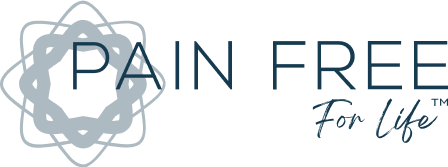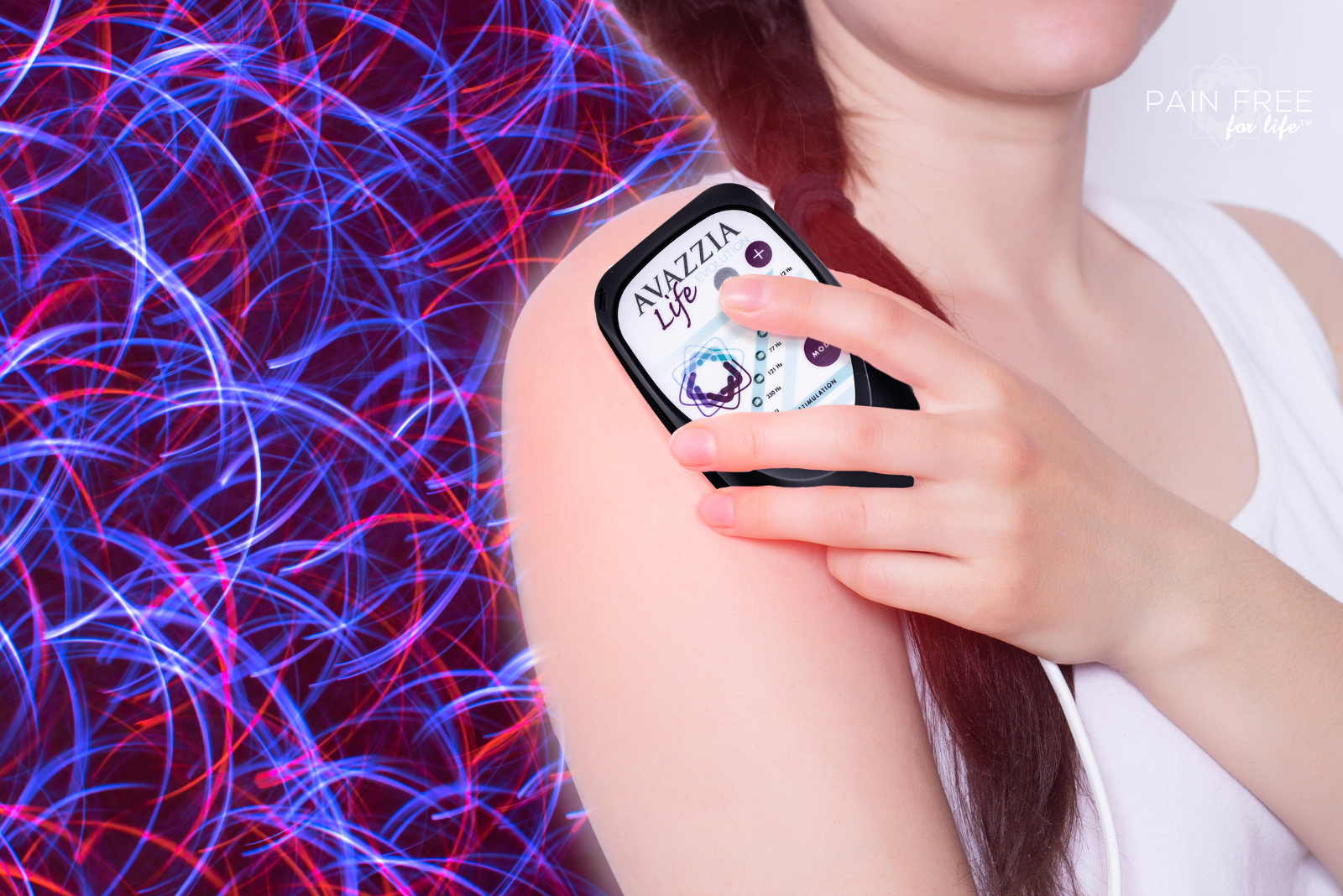
In the modern age of medicine, the appeal of drug-free healing methodologies has soared, offering hope to those seeking natural and effective pain relief. In fact, the NIH reports that 38% of U.S. adults are open to complementary and alternative medicine. Light therapy and microcurrent treatment have emerged as frontrunners among the popular holistic pain treatments available. But which one holds the edge in the battle against chronic pain? Is microcurrent better than light therapy? Can microcurrent and light therapy be used together?
Let’s dive in to learn more and find out!
History of Light Therapy (LED)
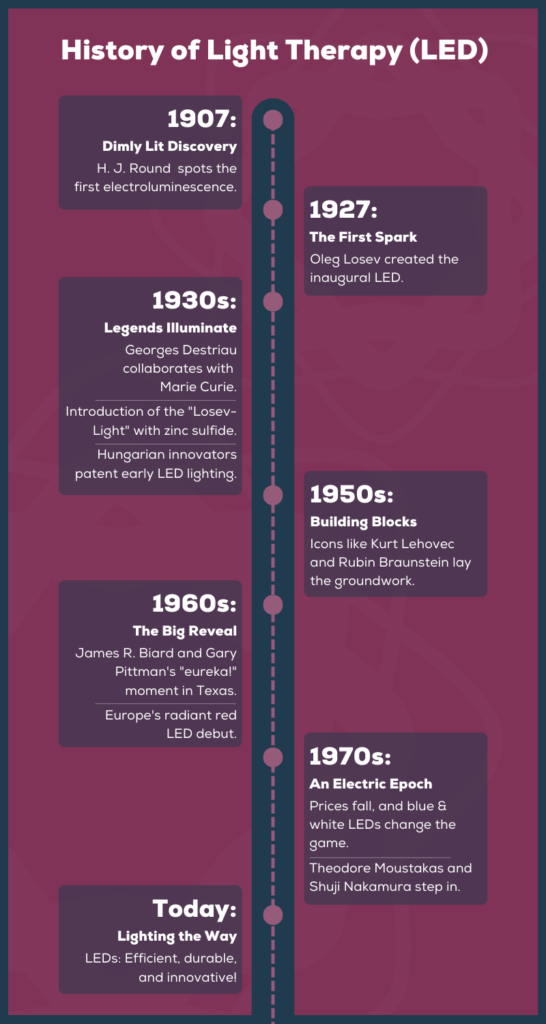
Picture this: It’s 1907, and in a dim room, H. J. Round observes a mysterious glow – the first glimpse of what we now call electroluminescence. But wait, fast-forward to 1927, and the inventive Oleg Losev crafts the very first LED!
Cue the 1930s, when Georges Destriau, under the wings of luminescence legend Marie Curie, sprinkles some magic with zinc sulfide, and “Losev-Light” emerges. Across Europe, Hungarian masterminds patent an early version of LED lighting. In the 1950s, the stage saw new stars like Kurt Lehovec and Rubin Braunstein setting the foundations for a brighter future.
But the real drama unfolds in the 1960s in Texas. At a lab bench, James R. Biard and Gary Pittman have an “eureka!” moment, pioneering a practical LED. Simultaneously, across the pond, the first radiant red LED sees the light of day.
The 1970s were electric! With prices dropping and bright minds like Theodore Moustakas and Shuji Nakamura entering the scene, blue and then white LEDs revolutionize our world. These tiny wonders now blink on our devices and light up our nights.
Today? Well, LEDs are everywhere and for good reason– super efficient, long-lasting, and an epic tale of how tiny lights can lead giant leaps in innovation.
History of Microcurrent Therapy
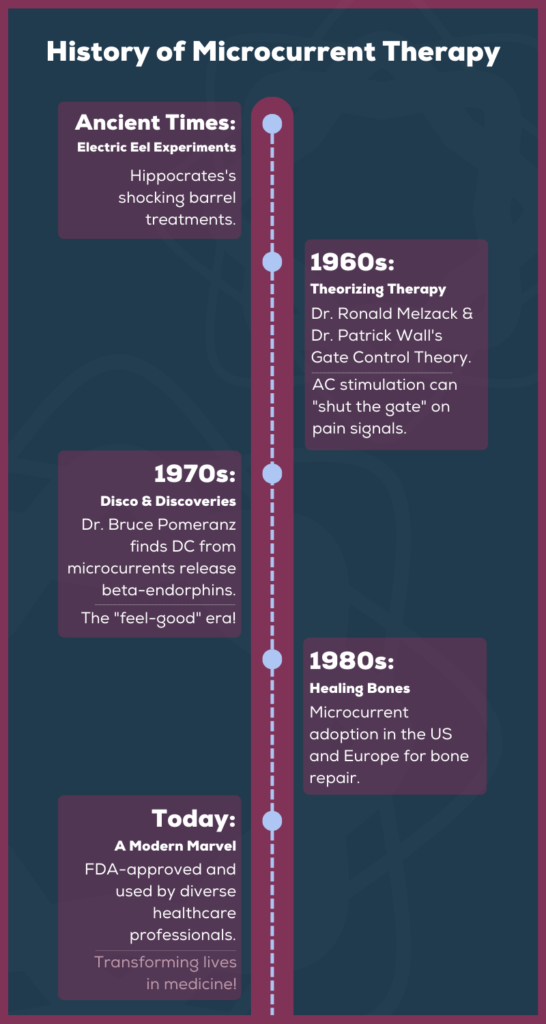
Imagine, if you will, a time when our forefather of medicine, Hippocrates, actually plunged people into barrels swirling with electric eels! A bit electrifying, to say the least, this was the ancient world’s first flirtation with what we now know as microcurrent therapy.
From these shockingly humble beginnings, the 1960s witnessed a groundbreaking evolution. Enter stage: Dr. Ronald Melzack and Dr. Patrick Wall. Their Gate Control Theory became the buzzy talk of the town, asserting that AC stimulation could literally “shut the gate” on pain messages to the brain.
The disco era of the 1970s danced in with Dr. Bruce Pomeranz’s shimmering discovery. He found that direct currents from microcurrent devices could be the DJ, making our pituitary gland release the feel-good hit of beta-endorphins.
Rolling into the 1980s, doctors in Europe and the US began using microcurrent to mend broken bones. Today? Microcurrent therapy is not just a historical footnote. It’s a present-day marvel! Recognized by the FDA and embraced by a spectrum of healthcare heroes—from orthopedic surgeons to holistic healers—it’s transforming lives and lighting up the path of modern medicine.
Now, that’s what I call a truly charged journey!
Differences Between Light Therapy and Microcurrent Therapy
How They Work:
- Light Therapy: This modality functions on the principle of photobiomodulation. It rejuvenates cells by enhancing ATP (adenosine triphosphate) production by exposing tissues to targeted light wavelengths. This elevation in ATP facilitates cellular repair and boosts overall cell function, thus aiding in pain alleviation and tissue regeneration.
- Microcurrent Therapy: At its heart, microcurrent therapy mimics the body’s natural bioelectric currents at a cellular level. While it also boosts ATP production – by as much as 500% in some studies – its primary modus operandi is leveraging subtle electric currents to catalyze cellular healing and alleviate pain. Resonating with the body’s natural frequencies promotes healing, muscle relaxation, and reduced inflammation.
Equipment and Tools:
- Light Therapy: The technology driving light therapy primarily centers around specialized LED panels or bulbs. These instruments are calibrated to emit light at specific wavelengths, optimized to penetrate the skin and underlying tissues for a therapeutic cellular response.
- Microcurrent Therapy: This therapy employs a more intricate setup. Devices like our Avazzia Life Devices are engineered to deliver precise, body-friendly electric currents to targeted tissue areas. These devices come with adjustable settings to cater to individualized treatment plans and specific pain conditions.
Side Effects and Safety Profiles:
- Light Therapy: A testament to its safety is the minimal side effects associated with light therapy. However, some users, especially those with sensitive skin, might occasionally report mild skin irritation or temporary redness post-treatment.
- Microcurrent Therapy: Boasting a robust safety record, microcurrent therapy’s side effects are generally benign. The most commonly reported sensation is a mild tingling or a slight electrical feeling during or shortly after treatment. It’s worth noting that this sensation is often associated with the therapeutic process itself and subsides shortly after the session concludes.
While both therapies operate on the fundamental principle of stimulating the body’s inherent healing processes, their approaches, equipment, and user experiences show nuanced differences. Their combined potential, however, hints at a bright future for non-invasive pain management!
Top 3 Similarities Between LED Therapy and Microcurrent Therapy
At Pain Free for Life, we understand the importance of varied pain management solutions. Two standout modalities, LED and microcurrent therapies, while distinct, have remarkable overlaps. Here’s a deep dive into these shared attributes:
- A Drug-free Approach:
- Nature-Powered Healing: Instead of flooding the body with chemical compounds, both therapies capitalize on our innate healing abilities. The beauty of it? You’re tapping into what our bodies naturally do best – heal themselves.
- Non-Addictive: Given the potential side effects and addiction concerns linked with some pain resolution strategies, the value of holistic alternatives cannot be understated. You can often lessen or even bypass the medication route by trying microcurrent and LED therapies.
- Pain Management Heros:
- Varied Yet Targeted: Whether it’s LED therapy’s skin rejuvenation prowess or microcurrent’s muscle-soothing capabilities, these energy medicine therapies offer solutions spanning a broad spectrum of pain sources.
- Backed by Real Evidence: Word-of-mouth testimonials are great! And we sure do have a lot of them to share; check them out here if you’re interested!
But what’s even better? Concrete, scientific research. Both LED and microcurrent therapies boast scientific studies, reviews, and real-world success stories that reiterate their effectiveness. Please review the “Sources Cited” section at the end of this blog to learn more!
- Easy Access:
- Therapy at Your Fingertips: Thanks to tech advancements, clinics are no longer the only places to receive LED and microcurrent pain relief. Be it LED face masks that fight inflammation or handheld microcurrent devices like those in our Avazzia Life line, self-administered therapy is now a reality for millions worldwide!
- Cost-efficient in the Long Run: Think of the repeated bills for conventional pain treatments and medications. Now, contrast that with the one-time purchase of a home device. The economics speaks for itself. And that’s not even considering the emotional and social toll conventional pain medications can have on your life and relationships.
- Simplicity is Key: Present-day microcurrent devices and LED devices are nothing short of revolutionary – combining game-changing technology with simple protocols and training materials so everyone can enjoy them.
THE GOAL? To ensure anyone, tech-savvy or not, can unlock these holistic health benefits easily and confidently. That’s why we include 2 months free in our training community for anyone who picks up a new microcurrent device. We want to ensure you have EVERYTHING you need to succeed with this healing technology from day 1.
Which is Better for Which Condition?
Light therapy and microcurrent therapy are gaining prominence as innovative treatments for chronic pain and a variety of skin issues, though their methodologies and primary applications differ.
Phototherapy, or light therapy, is a non-invasive technique that employs diverse light wavelengths to alleviate chronic pain and tackle skin conditions such as acne, eczema, and psoriasis. Beyond its skin-centric benefits, light therapy penetrates deep tissues, helping to reduce inflammation and, consequently, pain.
In contrast, microcurrent therapy uses subtle electrical currents to address pain, promote cellular regeneration, and increase blood flow. It’s notable for its capacity to substantially increase the adenosine triphosphate (ATP) levels in cells. ATP is the key to cellular energy, which is pivotal in pain relief and muscle recovery. While a secondary benefit, microcurrent therapy also aids in producing essential skin-firming proteins like collagen and elastin.
Though both therapies offer solutions for chronic pain, light therapy tends to be used more for inflammatory skin conditions. In contrast, microcurrent therapy is more geared towards musculoskeletal pain, scar tissue, nervous system regulation, and signs of aging.
Research and Statistics
Recent Harvard studies have provided a hopeful outlook for using Transcranial LED Therapy in various brain disorders where therapies are limited. Clinical trials have showcased significant pain reduction in arthritis patients post-light therapy sessions. On the aesthetics side of things, spas often incorporate red light therapy into skincare routines to reduce acne, bacteria, and sun spots.
Meanwhile, microcurrent treatment is backed by research emphasizing its efficacy in postoperative pain management, healing wounds, and reducing the need for pain medications.
Though comparative studies between the two are sparse, both treatments show promise!
Using Light Therapy and Microcurrent Treatment Together
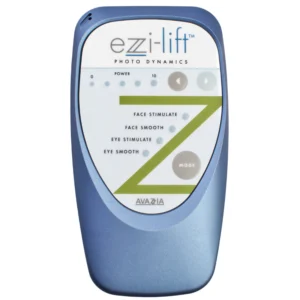
While each treatment is powerful in its own right, combining them can be synergistic. Imagine basking in light therapy and simultaneously reveling in the age-reversing effects of microcurrent. This isn’t just wishful thinking with the Ezzi Lift with Photodynamics, exclusively available at The Sana Shop.
By leveraging space-age LED technology alongside a rejuvenating microcurrent cosmetic facial massage, we’ve created a non-invasive, toxin-free alternative to facelifts and Botox.
From NASA-backed red light for enhanced blood circulation to green light halting hyperpigmentation and the soothing harmony of yellow and orange lights, the full spectrum of your skin care needs is addressed. Say goodbye to sagging, dull skin, and hello to the vibrant, fresh face you deserve!
While we’re still on the brink of fully understanding their combined potential for pain resolution, initial insights indicate a promising future.
Early testimonials are hinting at accelerated healing and pain relief when both treatments are incorporated into a holistic regimen! Keep an eye out for more info on that soon.
Charting New Frontiers: The Power Duo of Light Therapy & Microcurrent
While the world of pain management is vast and varied, light therapy and microcurrent treatment stand out as novel treatment options instead of or in combination with conventional pain resolution methods. Their histories, backed by science and results, make them worthy contenders in the noble fight against chronic pain.
As we continue our journey into holistic health, it’s imperative to stay informed and consult with healthcare professionals. The right treatment can vary based on individual needs, conditions, and body responses.
- If you have any questions about investing in one of our microcurrent devices, please check out our handy guide here.
- Or, if you’d like to ask Dr. Rob about picking up an Avazzia Life device, schedule a free group consultation here.
At www.thesanashop.com, we are at the cusp of merging these treatments (plus MORE) for pain resolution, exploring avenues previously uncharted by modern science. Stay tuned for an exciting product development on the horizon, poised to revolutionize our approach to pain management forever!
Sources cited:
The Use of Low Level Laser Therapy (LLLT) For Musculoskeletal Pain – PMC (nih.gov)
The use of Targeted MicroCurrent Therapy in postoperative pain management – PubMed (nih.gov)
Light therapy – an overview | ScienceDirect Topics
MGH-led study shows light therapy is safe – Harvard Gazette
Effect of NASA Light-Emitting Diode Irradiation on Wound Healing | Request PDF (researchgate.net)
